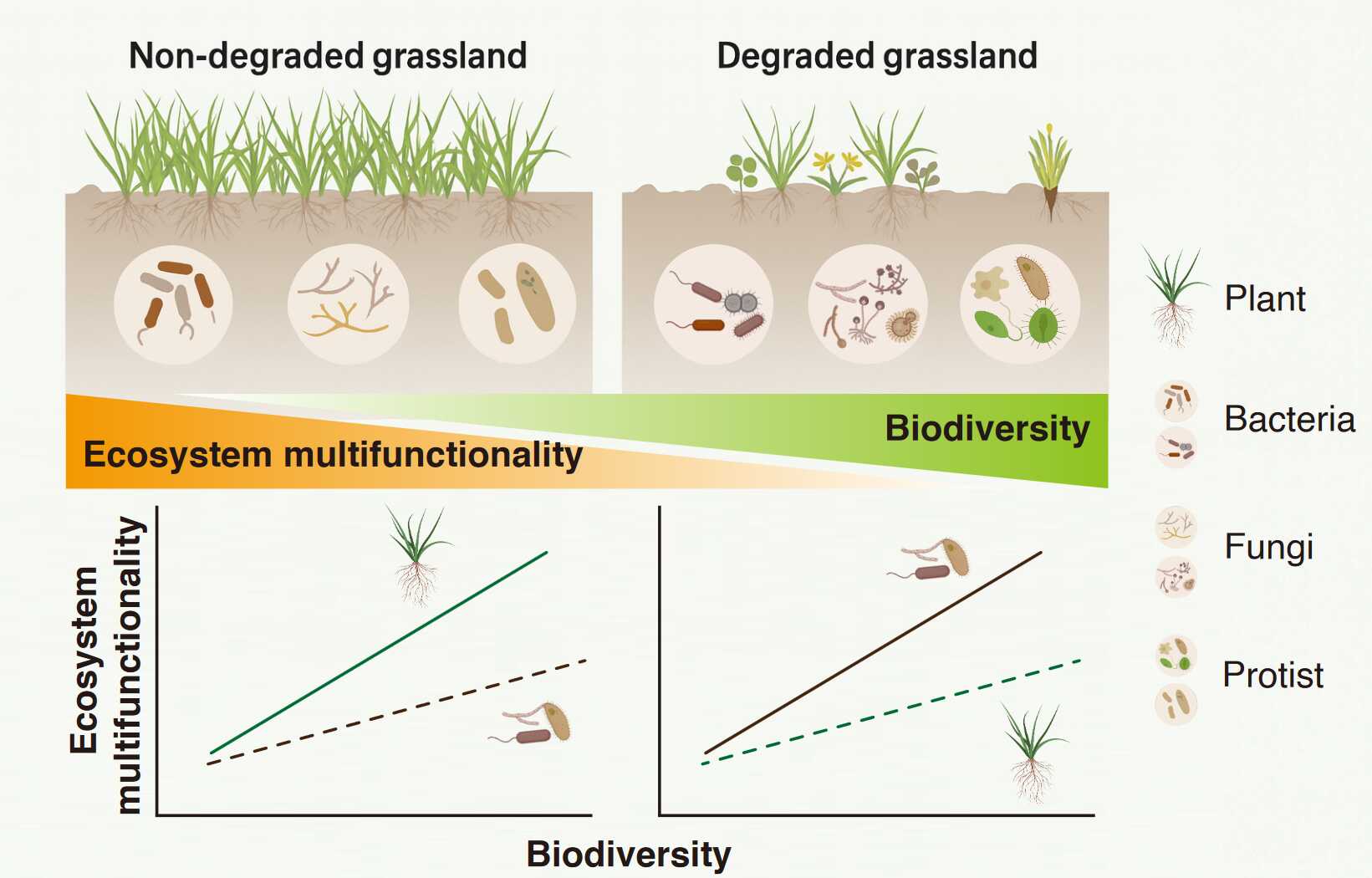
Grassland degradation fundamentally reshapes how biodiversity supports ecosystem multifunctionality, shifting it from being plant-dominated to being mediated by soil microbes, according to a new study led by Prof. YANG Yuanhe from the Institute of Botany of the Chinese Academy of Sciences (IBCAS).
The findings, published in Nature Plants on November 10, provide the first large-scale field evidence that grassland degradation alters biodiversity–multifunctionality relationships across natural ecosystems.
Grasslands cover nearly 40% of Earth's land surface and provide critical ecosystem functions such as carbon storage, forage production, and water regulation. However, nearly half of the world's grasslands are now degraded, largely due to overgrazing and climate change. The Tibetan Plateau hosts the largest and most fragile alpine grasslands on Earth, with moderate degradation now the most widespread condition. Grassland degradation is typically accompanied by changes in plant and soil microbial communities, which may profoundly reshape the relationships between biodiversity and ecosystem functioning. Nevertheless, it has remained unclear if and how grassland degradation alters the relationship between biodiversity and ecosystem multifunctionality across large-scale natural ecosystems.
To fill this gap, the researchers conducted an extensive transect survey spanning about 2,600 km across the Tibetan Plateau, covering 44 paired sites of non-degraded and moderately degraded grasslands. They measured 20 indicators of ecosystem functioning, including plant productivity, water-holding capacity, soil carbon, nitrogen and phosphorus pools, and organic matter decomposition.
Based on the combination of a quadrat survey and amplicon sequencing, the researchers assessed both above- and below-ground biodiversity, including species richness of plants, bacteria, fungi, and protists.
The results showed that moderate degradation significantly reduced individual ecosystem functions and multifunctionality, while increasing both plant and soil biodiversity. Further analyses revealed that, following degradation, the influence of soil biodiversity on multifunctionality strengthened, whereas that of plant richness weakened. These shifts were associated with a decline in the selection and complementarity effects of plant diversity on the one hand and a strengthening of microbial complementarity on the other hand.
These findings highlight the critical role of soil microbial diversity in sustaining ecosystem functioning under degradation. The researchers suggest that grassland restoration efforts should move beyond vegetation recovery to prioritize the conservation and rehabilitation of soil microbial communities, offering a framework for microbe-based ecological restoration of degraded grasslands.

Effects of grassland degradation on ecosystem functioning, biodiversity, and the biodiversity–ecosystem multifunctionality relationship (Image by GAO Xiaoxia and BAI Yuxuan)

86-10-68597521 (day)
86-10-68597289 (night)

52 Sanlihe Rd., Xicheng District,
Beijing, China (100864)

